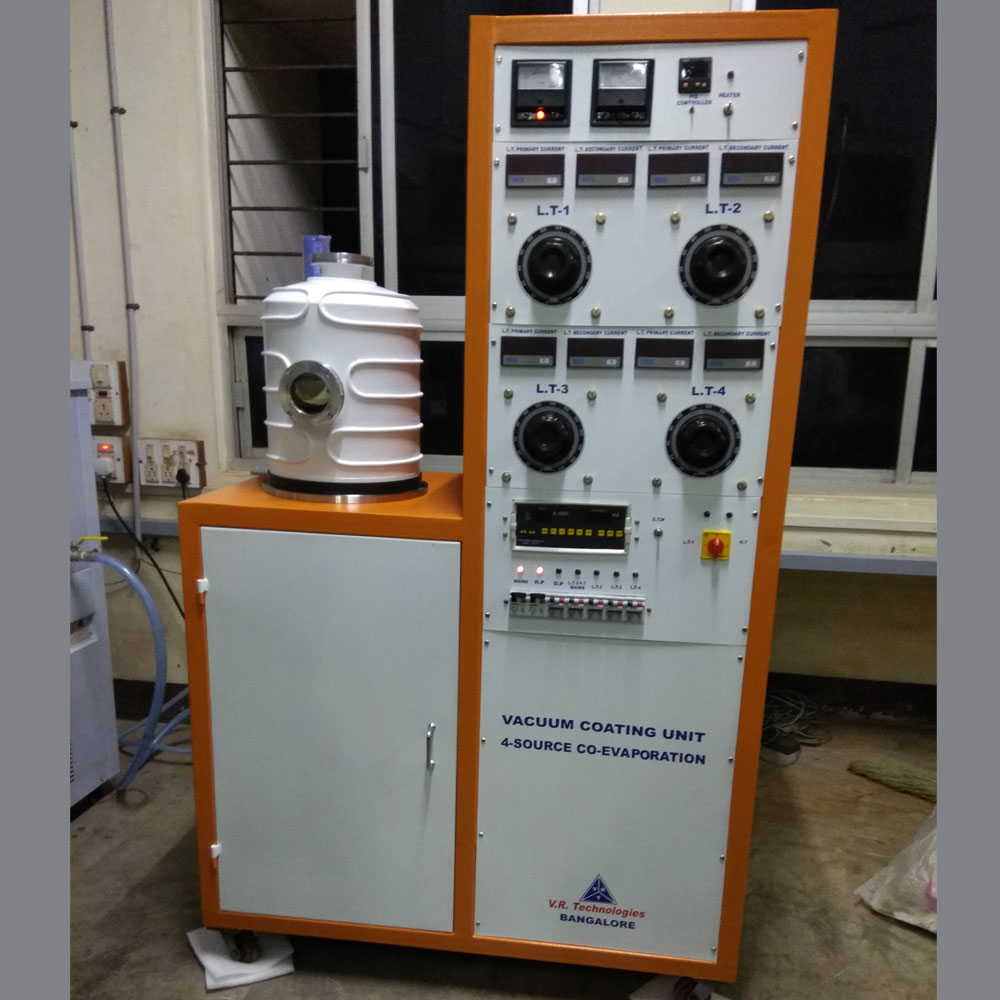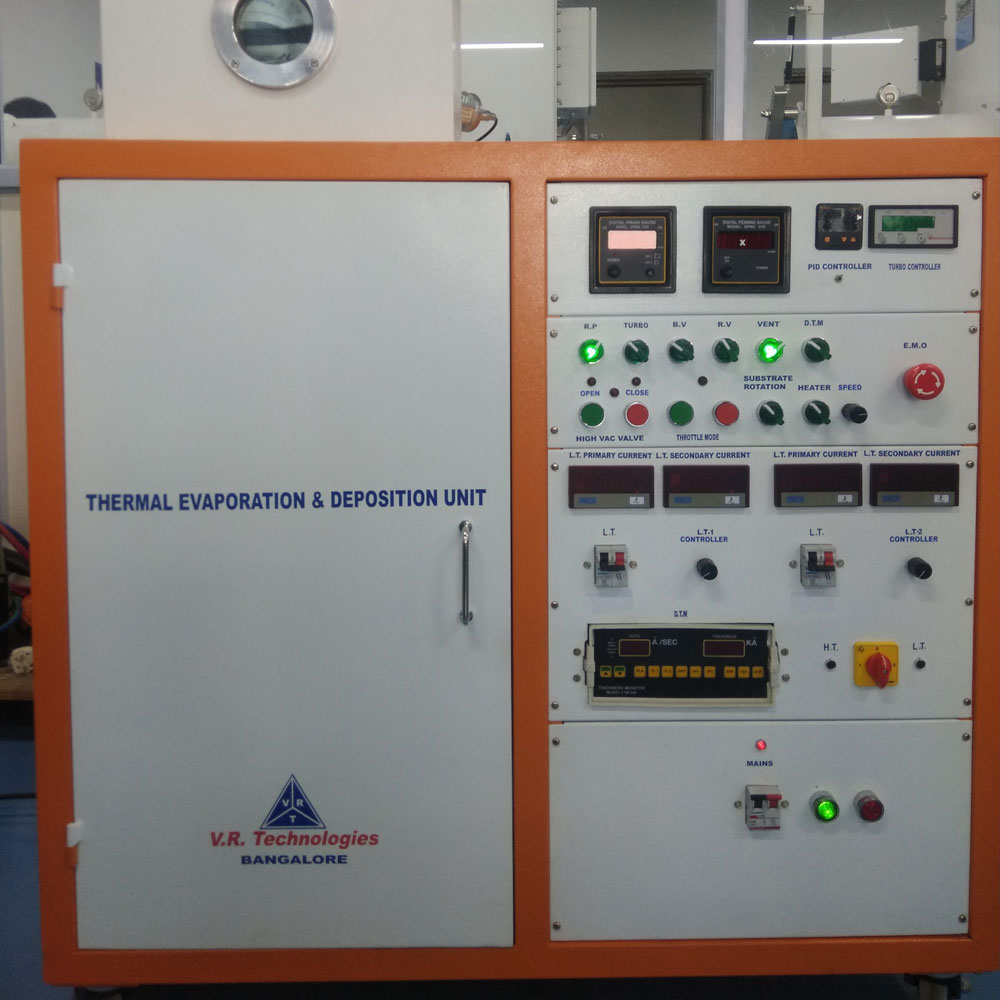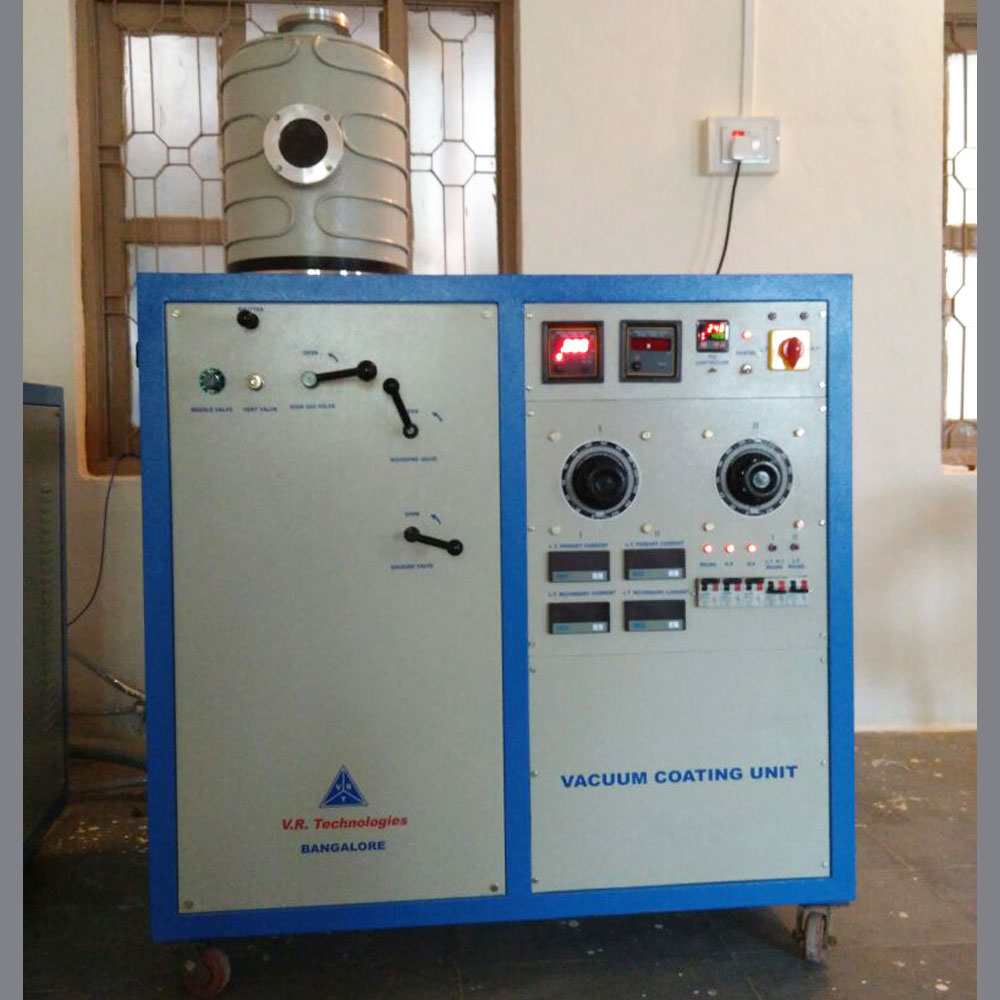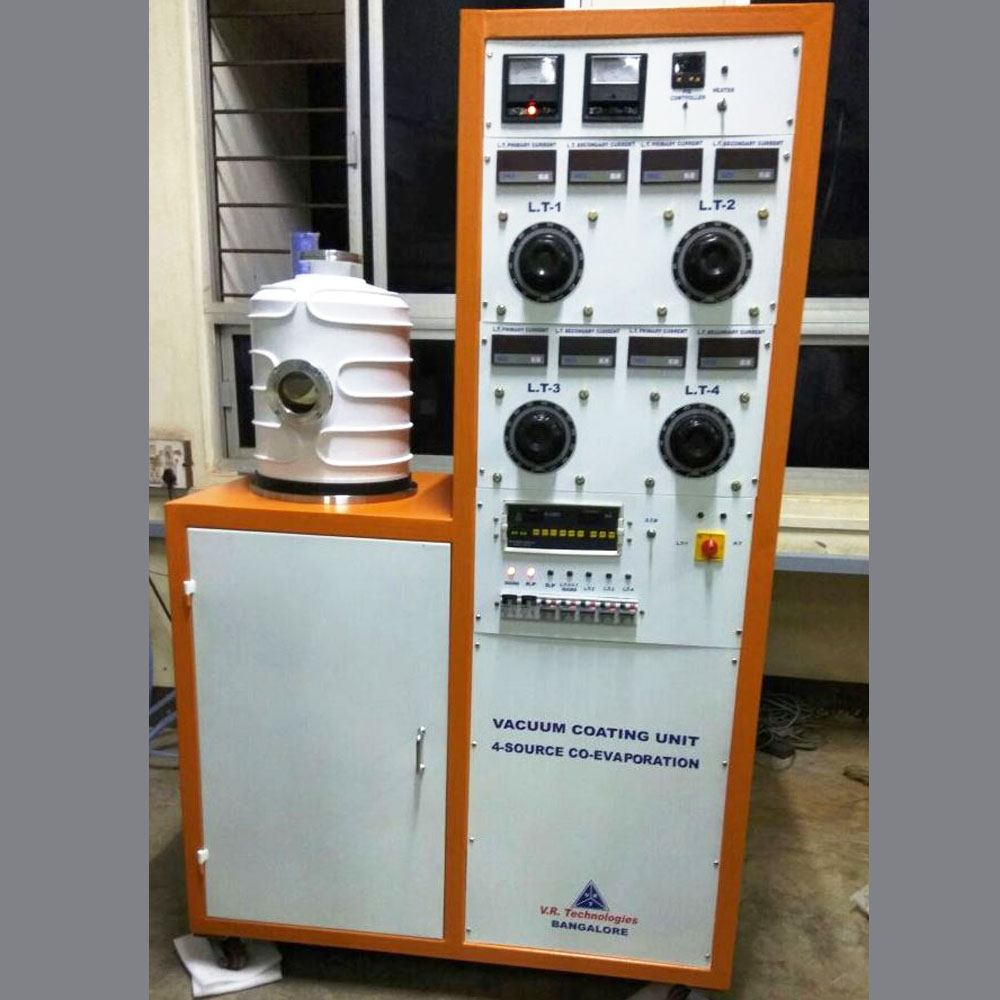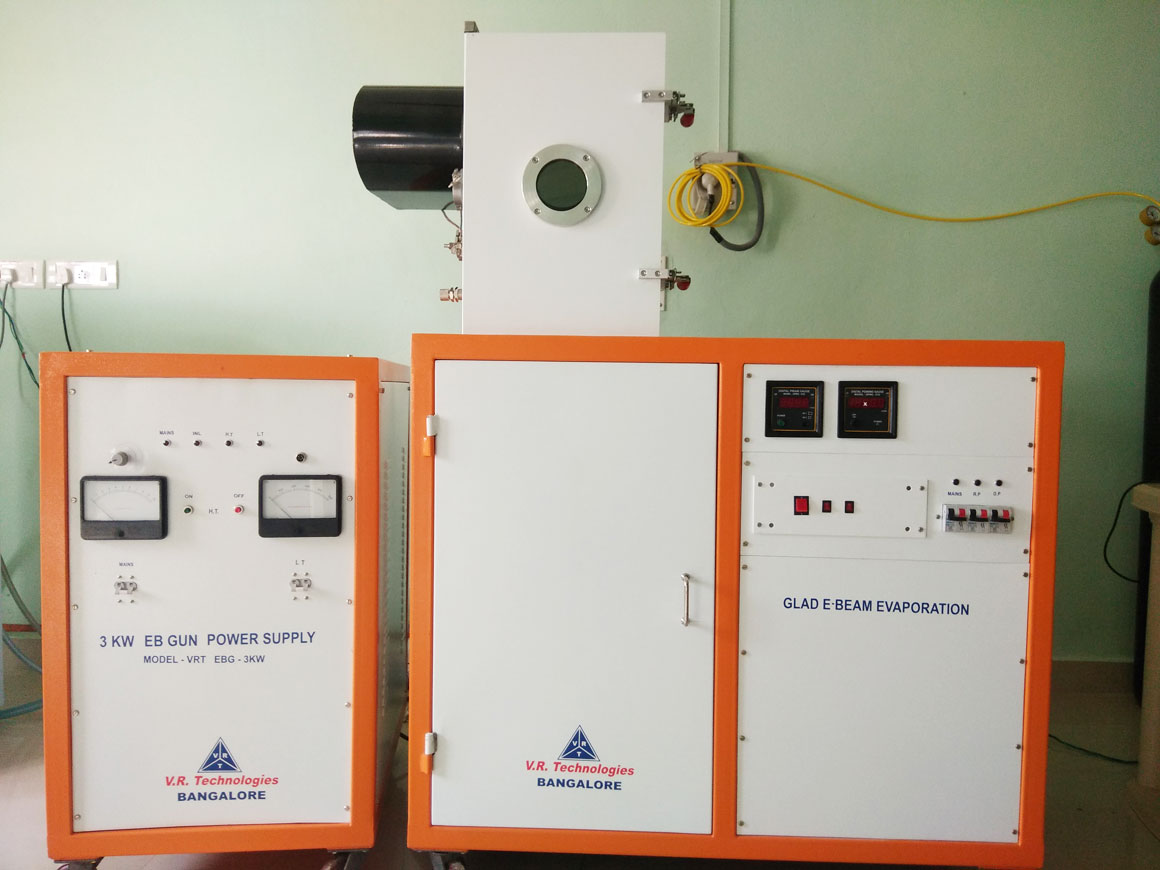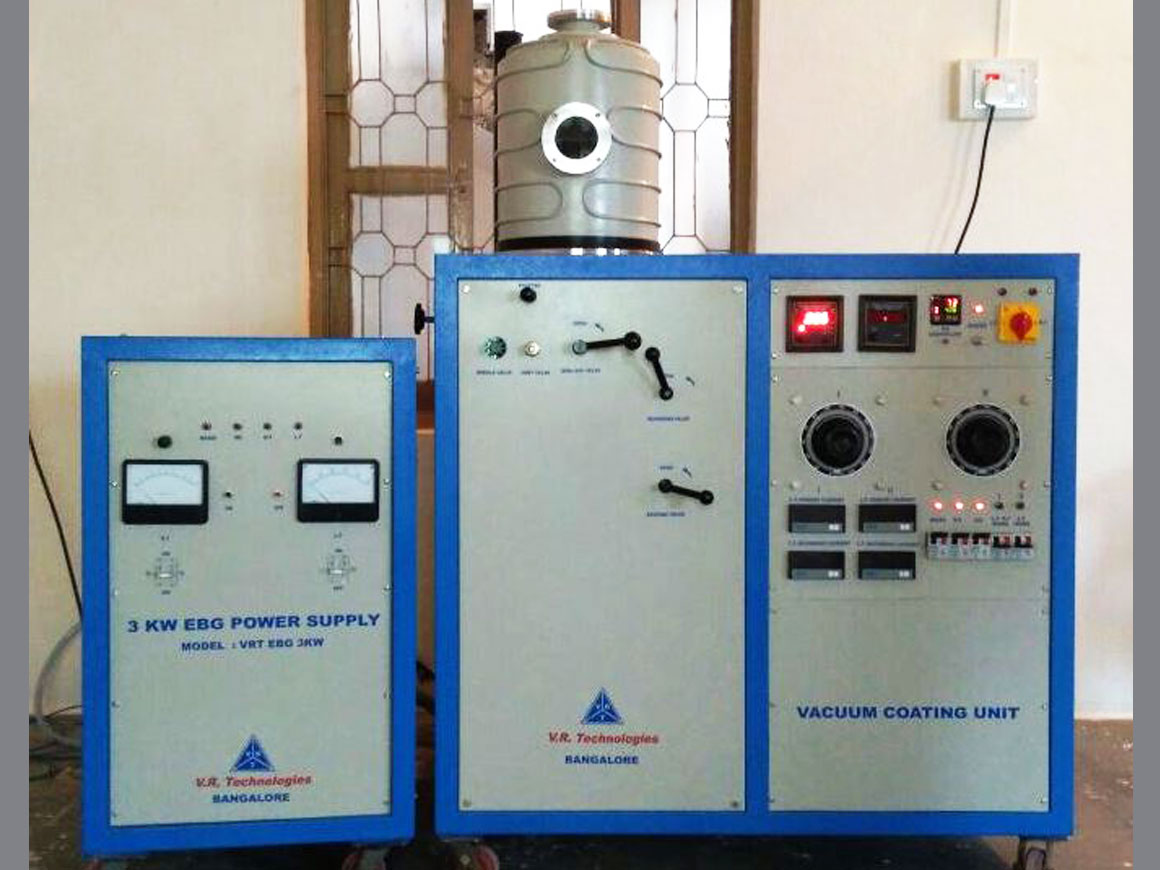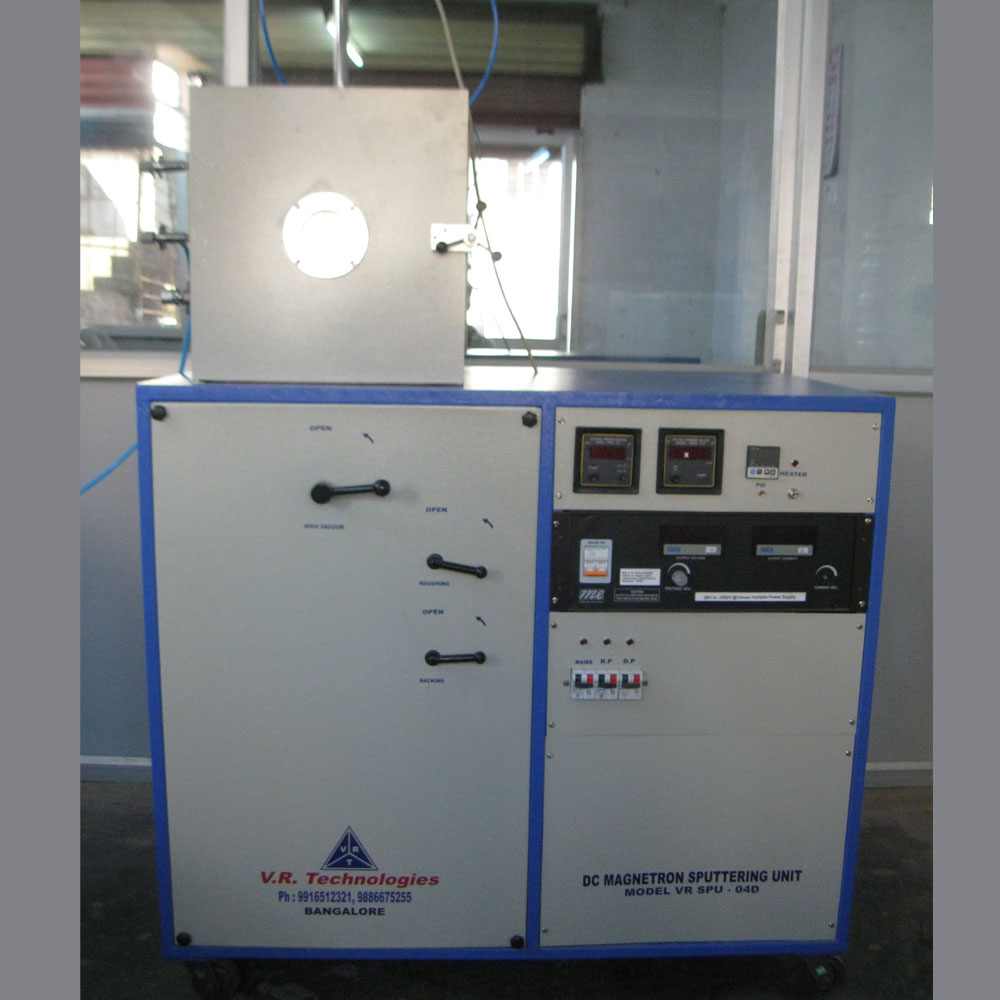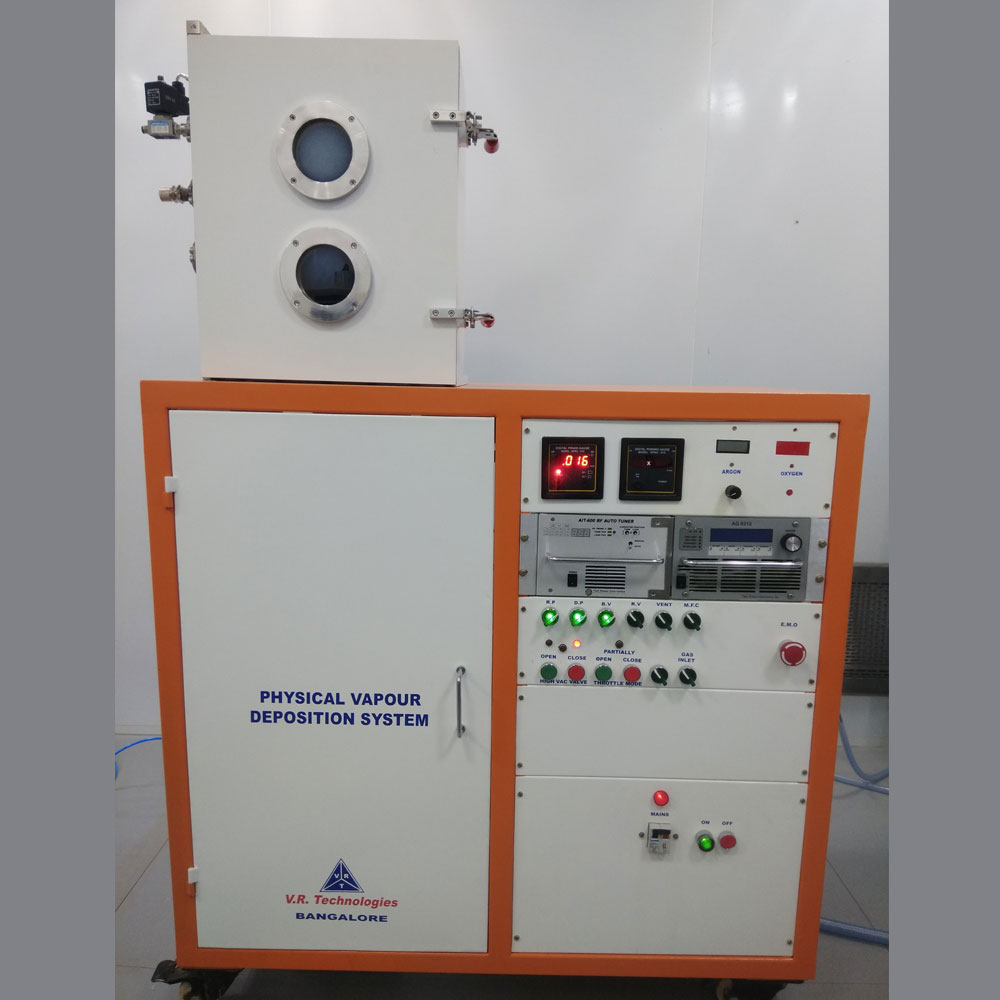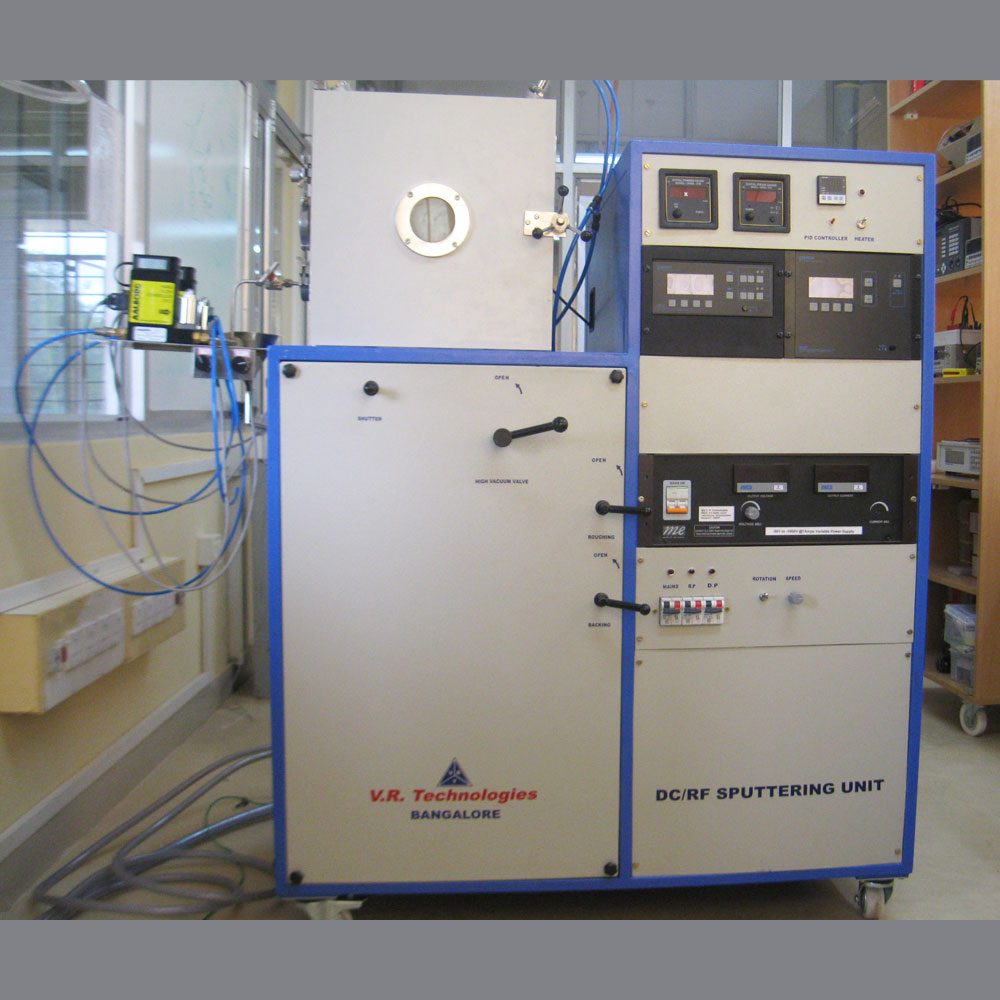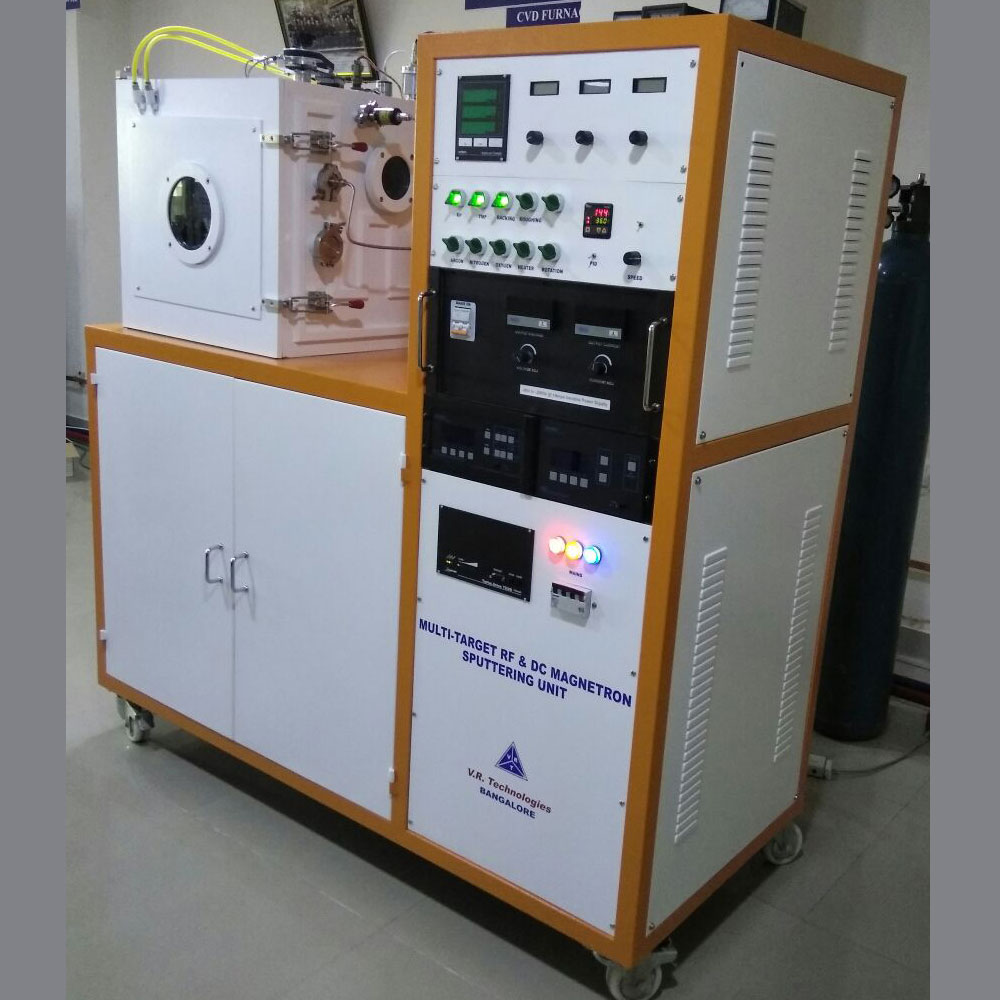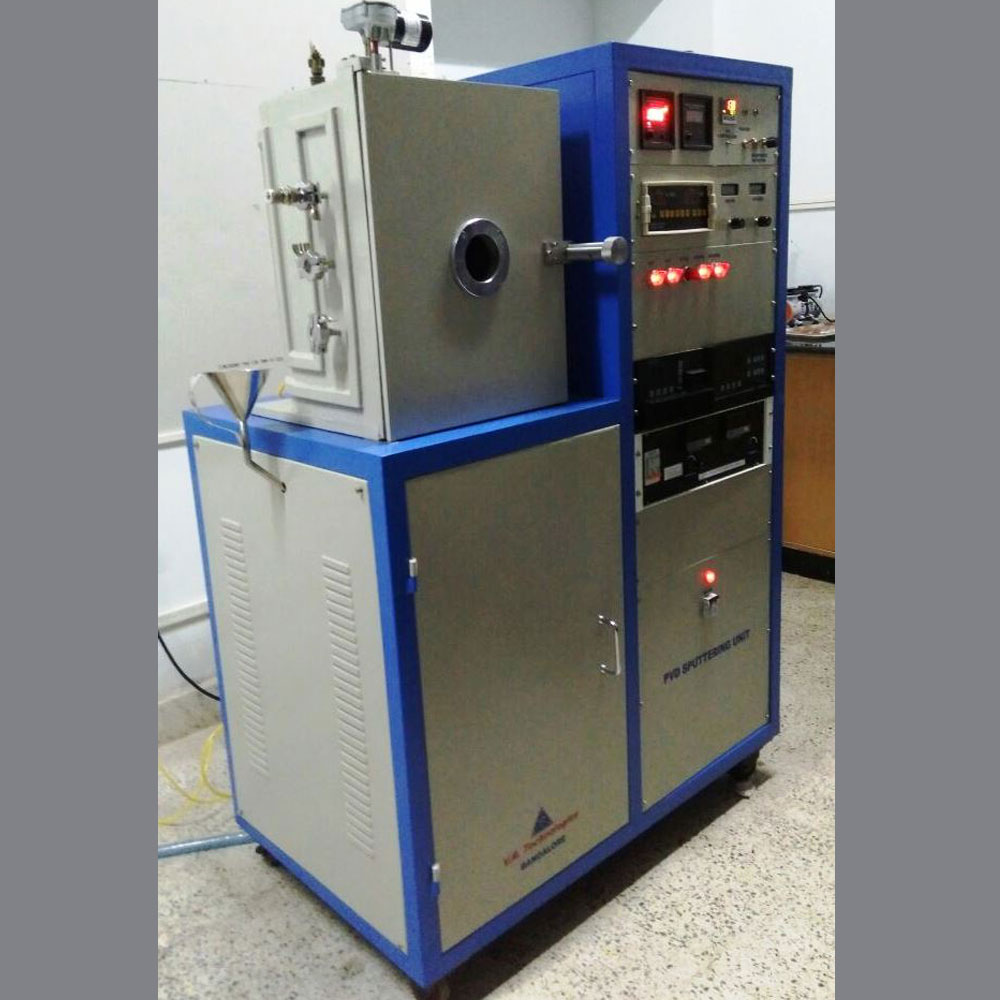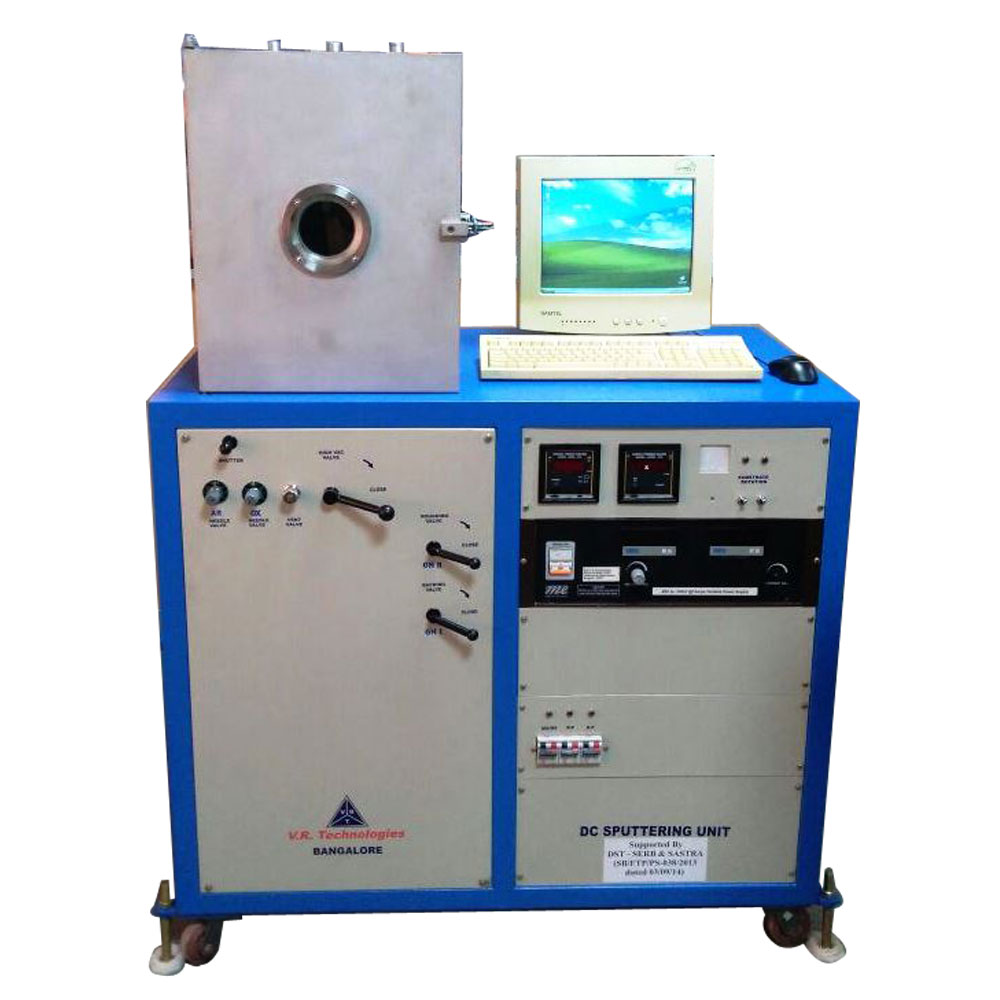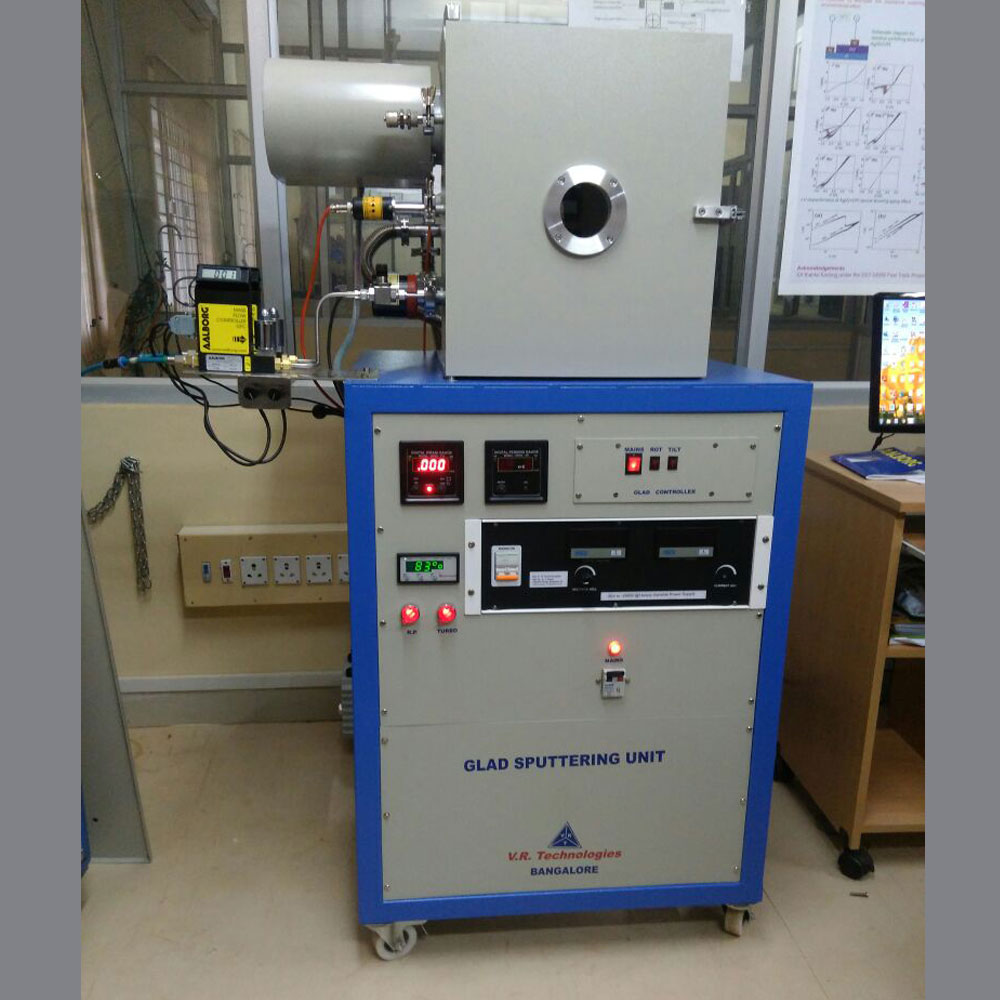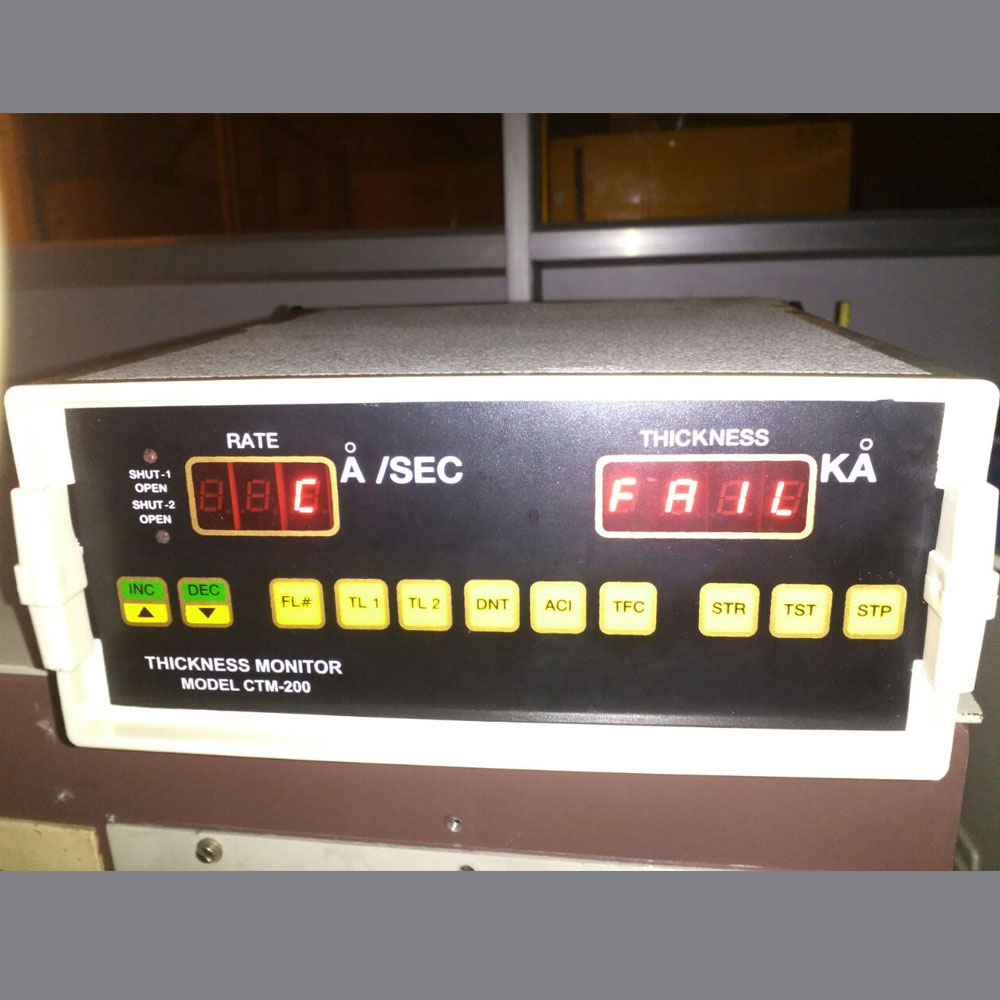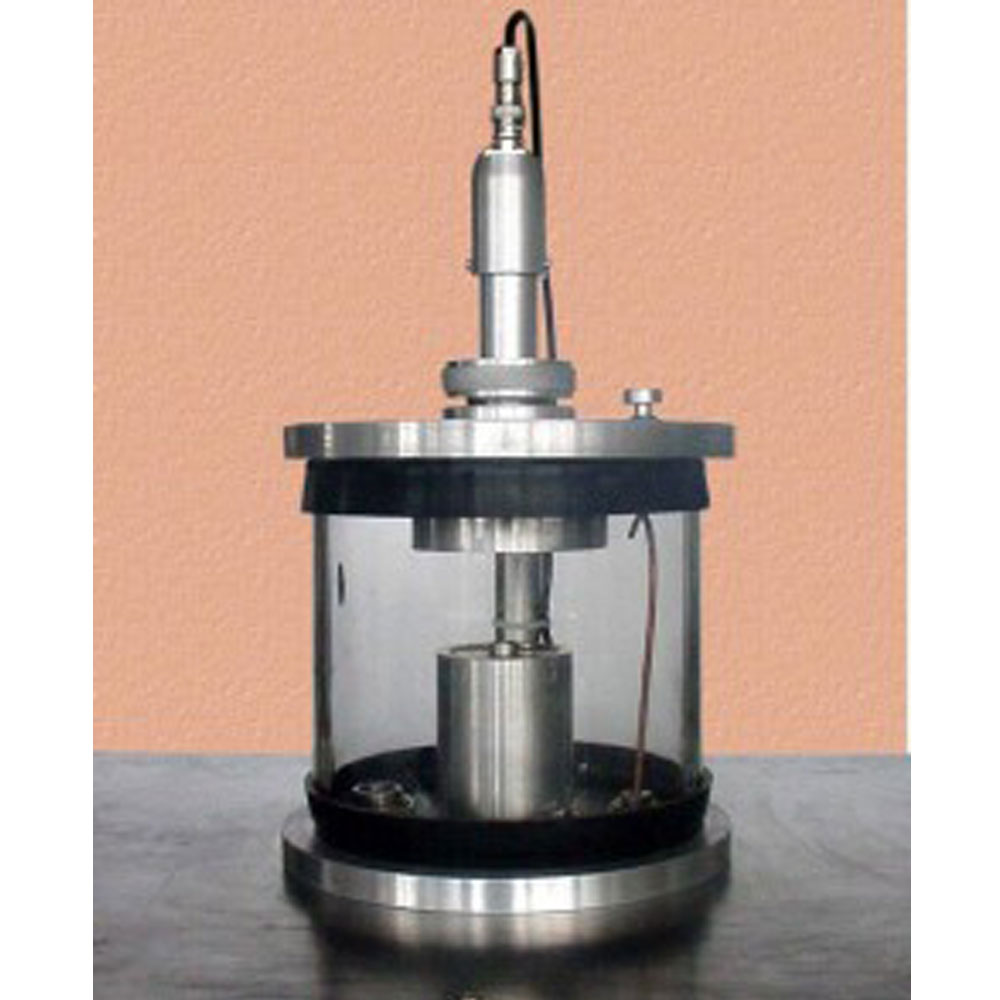Thin Film Deposition Units
Thermal Evaporation
V R TECHNOLOGIES Thermal Evaporation involves heating a solid material inside a high vacuum chamber, taking it to a temperature which produces some vapor pressure. Inside the vacuum, even a relatively low vapor pressure is sufficient to raise a vapor cloud inside the chamber.
The Thermal Evaporation of materials in vacuum is a popular method to provide a thin film coating on a substrate. In evaporation a material is heated in vacuum until it boils, the resulting vapour then condenses on the substrate to form a thin film. This film can be from a few atoms thick (less than 1nm) to hundreds or thousands of nm thick. Thermal evaporation is carried out at high vacuum, typically better than 1x10-6 mbar.
Electron Beam Evaporation
Evaporation takes place under vacuum, typically 10E-5 or deeper. A current (5 to 10 kV) is sent through a tungsten filament and heats it to the point where thermionic emission of electrons takes place.
Sputtering
Magnetron sputtering is a high-rate vacuum coating technique that allows the deposition of many types of materials, including metals and ceramics, onto as many types of substrate materials by the use of a specially formed magnetic field applied to a diode sputtering target.
Glad Deposition Technique
Magnetron sputtering is a highly versatile technology for thin film deposition. Running at typical pressures in the 5x10-3 mbar range and using Argon gas, it employs a glow discharge or plasma generated by a purpose-made high negative-voltage power supply to generate gas ions which bombard the surface of a ‘target’ of the coating material. Material is then \'sputtered\' from the target due to the impact of the Argon ions.
Plasma Enhanced Chemical Vapour Deposition (PECVD)
V R TECHNOLOGIES Plasma-enhanced chemical vapor deposition (PE-CVD) provides an effective alternative for depositing a variety of thin films at lower temperatures than those used in typical CVD reactors without settling for a lesser film quality. A high-quality silicon dioxide (SiO2) film can be deposited at 300°C to 350°C, while CVD requires temperatures in the range of 650°C to 850°C to produce similar quality films.
PE-CVD uses electrical energy to generate a glow discharge (plasma) in which the energy is transferred into a gas mixture. This transforms the gas mixture into reactive radicals, ions, neutral atoms and molecules, and other highly excited species. In PE-CVD, the gas phase and surface reactions are strongly controlled by the plasma properties. In place of thermal activation, electron impact dissociation of the gas mixture drives gas phase reactions enabling deposition to be carried out at temperatures much lower than a conventional CVD process. For PE-CVD, deposition rates are usually not a strong function of substrate temperature since surface activation energies are often small. However, film properties such as composition, stress, and morphology are generally strong functions of the substrate temperature.
V R TECHNOLOGIES Plasma Enhanced Chemical Vapour Deposition systems offer a wide range of cost effective material processes to R&D in the electronic, industrial and medical sectors. It uses a well proven design providing ease of use, with excellent process management enabling the preparation of superior quality films.
Ion Beam Sputtering Units
Ion beam deposition process, an ion source is used to sputter a target, and the sputtered material is deposited onto a substrate. The ions possess equal energy, making the process mono-energetic and highly collimated. In a typical configuration, an IBD system features the ion source, a target and a substrate.
Ion sources require the use of high-throughput vacuum systems. V R TECHNOLOGIES applies ion beam technology to customer requirements on systems from TF600 and above, plus our larger special-purpose systems.
RIE & Plasma Cleaning
Reactive-ion etching (RIE) is an etching technology used in microfabrication. RIE is a type of dry etching which has different characteristics than wet etching. RIE uses chemically reactive plasma to remove material deposited on wafers. The plasma is generated under low pressure (vacuum) by an electromagnetic field.
V R TECHNOLOGIES Reactive Ion Etch tool offers a wide range of cost effective material processes to R&D in the electronic, industrial and medical sectors. It uses a well proven design-providing ease of use, with excellent process management enabling to prepare superior quality devices.
Film Thickness Monitoring
V R TECHNOLOGIES Film Thickness Monitor (FTM) quartz crystals are used to determine the thickness of material deposited and may be used to terminate coating at a pre-set thickness. The quartz crystal is placed in the vacuum work chamber.
V R TECHNOLOGIES offers quartz crystal film thickness monitors and controllers with a range of features to suit different customer applications and budgets. Where systems have PC control, the PC can drive the monitor or controller as required to achieve complete source selection and deposition control.
Gold Deposition
V R TECHNOLOGIES Vacuum Deposition Coatings (of metals such as Gold & Aluminium) A process where solid metal is evaporated on to the component to be coated. By carrying out this process under vacuum, the evaporation process is not only better controlled but the process temperature is also lowered, allowing plastics to be coated.
Share

